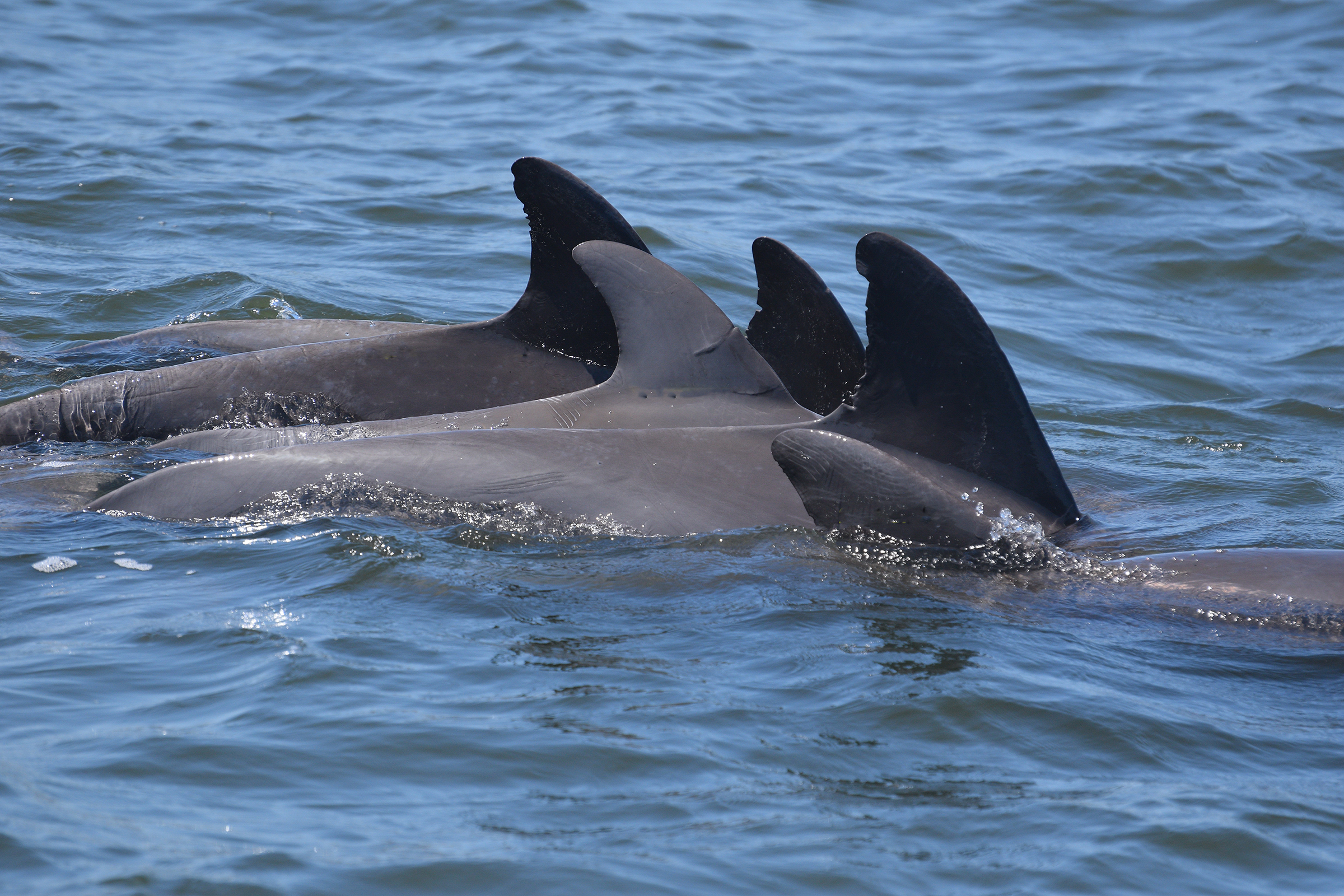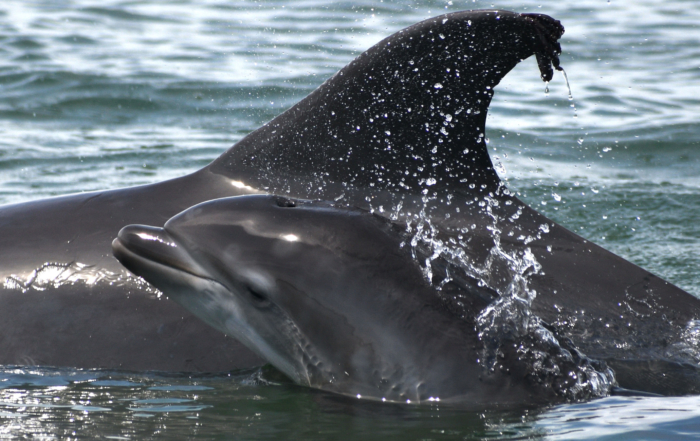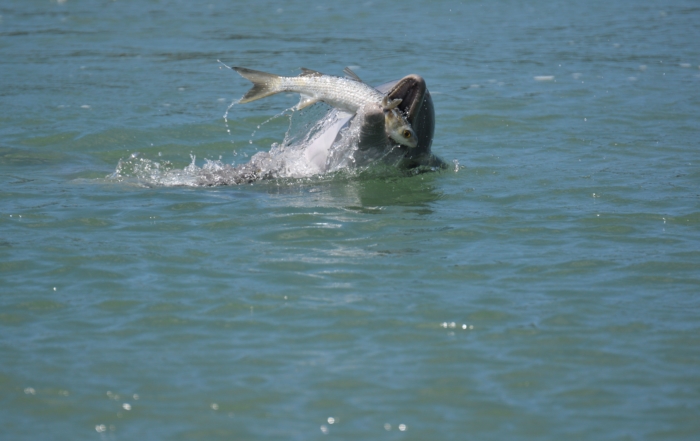Dolphin Population Structure

SDRP conducts the world’s longest-running study of a wild dolphin population, initiated in 1970. Information available from five decades of research on the multi-decadal, multi-generational, year-round resident community of individually identifiable bottlenose dolphins of Sarasota Bay established this as a unique natural laboratory for learning about the biology, behavior, ecology, social structure, health, and communication of dolphins, as well as the effects of human activities on them.
Long-term study is crucial for understanding the lives of members of long-lived species such as bottlenose dolphins, and for being able to detect trends in populations relative to changes in their environment. Knowing the long-term geographic range of a population unit allows the measurement of exposure to threats, which in turn facilitates mitigation, including direct interventions.
The ability to observe identifiable individual dolphins of known sex, age, and familial relationships through all of their life history milestones and associated transitions in behavioral and social patterns, to collect data on health and condition, and to then document their reproductive success and cause of death is rare in cetacean research.
Data on ranging patterns, social patterns, and genetics are collected through a variety of techniques, including systematic photographic identification surveys, periodic catch-and-release health assessments, tagging and tracking, remote biopsy dart sampling for genetics, and passive acoustic monitoring from shore-based listening stations.
Studies in Sarasota Bay first established the concept of resident communities of inshore bottlenose dolphins, defined by ranging patterns, social structure, and genetics. These communities are demographically and behaviorally discrete, but not reproductively isolated. Similar patterns have been found subsequently in many other bays, sounds, and estuaries, especially along the west coast of Florida.
Research is conducted under a series of Scientific Research Permits issued by NOAA’s National Marine Fisheries Service, and annual renewals of Institutional Animal Care and Use Committee approvals by Mote Marine Laboratory.
2021 Baby Boom
The Chicago Zoological Society’s Sarasota Dolphin Research Program has documented 22 dolphin births in 2021 to the long-term resident bottlenose dolphin community of Sarasota Bay, Florida, exceeding the record of 21 set in 2017. The
When the Prey is Gone
When the Prey is Gone Gaining a fuller understanding of dolphins also means studying how they interact with their environment, including learning about one of the main ecological drivers for their behavior: prey






